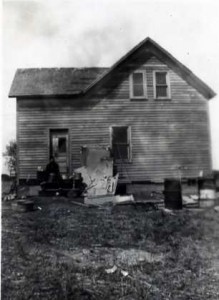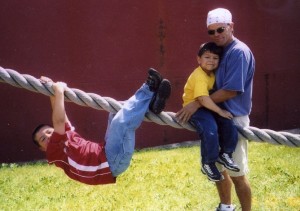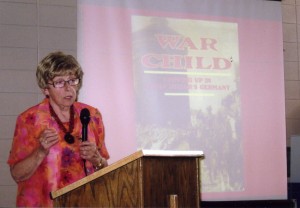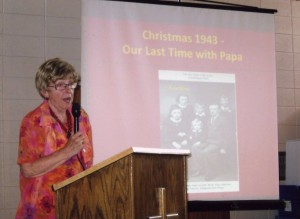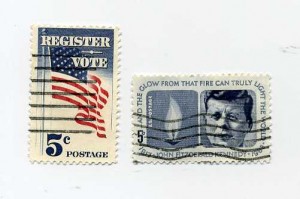This is post #6 of 13. The others: July 24, 26, 27, 29, 30, August 1, 2,5,6,7,10,15.
What follows is my response to a long editorial in the July 22, 2009, Minneapolis Star Tribune “Don’t ignore costs of long-term care“. My response was sent U.S. mail to the writer of the editorial and the legislators mentioned. I did not write it for publication – it is too long. I may shorten it for submission as a regular newspaper column in August.
It is important to read the editorial first, as it provides the context for the response. The editorial on which the letter is based should remain archived at www.startribune.com, (click on Opinion, click on Editorials and look through the archived list.) I have typed the text of the editorial at the end of this post.
July 28, 2009
Dear Editorial Writer (“Don’t ignore costs of long-term care”, July 22, 2009)
I have been letting your editorial of July 22 settle for a bit before responding. I am armed only with personal experiences, your editorial and the enclosed [June 2, 1995 ] editorial by former Mn Governor Elmer L. Andersen. I didn’t know about the Center of the American Experiment symposium, and in any event wouldn’t have been in their loop anyway.
To be succinct, the saying “fox guarding the chicken coop” came to mind as I was reading the proposal for (possibly) more taxes made by the Minnesota Free Market Institute representative. Of course, in this case, the “fox” wouldn’t eat a few chickens and dash away; he’d “monetize” them by careful stewardship of the “eggs” – tough luck for Farmer Jones (the taxpayer) who accepted the “deal”…so it goes. Money in the bank.
It happens that the Sunday before your editorial I was standing in the churchyard of the magnificent Cathedral of St. Boniface in Winnipeg. We were there to close out a fascinating delving into the last days of my great-grandfather Octave, who died destitute in 1925 at what was described by my father as the “poor farm” in Winnipeg. I envisioned what this must be. I’d written about these recollections in a June 21st piece in my blog, and one thing led to another. “Poor farm” came to be called “rest home” and by July 19, it turned out Great-Grandpa died in the Old Men’s section of Hospice Tache, the hospital of the Grey Nuns in Winnipeg, next door to the Cathedral. In other words, as was true in those years, he was dealt with as a charity case, and the good nuns, who took seriously their vow of poverty, cared for him in his final days (he is buried in northeast North Dakota, appropriately at rest.)
In 1963, Great-Grandpa’s daughter, my grandmother, died. This was before Medicare. I was 23 at the time. To my recollection, she spent most of the last six years of her life in a private room in a small town Catholic hospital. Her husband had died. She’d had a stroke, but she could hobble around with a walker. Dad used to say that her hope was that she would not run out of money before her death. She had little money to begin with. I think she probably achieved her goal, probably with the the hospital administrators “wink” at bills. Her care was very inexpensive, and caring.
About 1970, I was at a meeting with a Minnesota state legislator about some local issues. Nice guy. It was some years later that I learned that he and I were shirt-tail relations on Great-Grandpas side. Some time after that I learned the legislator had made a lot of money through Nursing Homes he owned. He’s long passed on, maybe visiting with Grandma…. Times had changed. Cheap care had gone missing. It was now in the Marketplace.
In the early 1990s it became my great good fortune to begin a dozen year friendship with Elmer L. Andersen, former MN Governor.
He and I became acquainted through a column he’d written in the Anoka Union. He was a good writer, and I looked forward to his columns, many of which I kept, including the one that is [below, following this response]. It too, speaks for itself.
At some point, in some other context, I learned of the problem that (so far as I know) may still be a problem in American society: people with money (or their heirs) developed strategies to protect their assets so that when it came time to go to the nursing home, their inheritance was protected and the state (“we, the people”) would pay the bill. Of course, this was a perfectly “honest” strategy. I seem to recall legislated efforts to close that loophole – probably they still happen – but my guess is that someone with a good lawyer and tax man can figure out ways to shelter their funds while the state pays the lion’s share of their costs.
The business of making money is rarely a kind and gentle one. The astute capitalists figure out ways to figuratively pick people’s pockets. One of those groups ripe for the picking is, likely, the older age health care sector, which is why the Free Market guy is so compassionate towards the future needs of baby-boomers: there’s lots of money to be made from them….
As for myself, for a long time I’ve had what I understand to be the “top of the line” Long Term Care insurance (another lucrative business). Whether it is more than I need, or if there is a loophole that will deny me essential coverage because of something I didn’t notice, or if it becomes prohibitively expensive to maintain – all of these and other questions are unknown to me, now. I can’t afford the necessary lawyers and accountants. And I’m perhaps more astute about this than the average consumer.
Bottom line for me is that the profiteers are the ones who have driven the health care industry into the state of crisis in which it now finds itself. I’m skeptical about the gushing “honestly and courageously” statement near the end of the editorial. Altruism is of little matter, so long as plenty of money is made, and there is nothing to be lost if they’re hypocritical by criticizing the government at the same time as they’re making sure the government keeps their own trough plenty full.
No doubt your editorial is getting wide circulation in the “right-of-center” world….
Sincerely, Dick Bernard
Enclosure: Editorial of former MN Governor Elmer L. Andersen, then newspaper publisher, in the June 2, 1995, Anoka County Union:
“For the fiscal year ending June 30, 1995, the state Department of Human Services had a budget of $9.2 billion. That is an enormous amount of money and an incredible responsibility to administer. Commissioner Maria Gomez, a highly qualified and dedicated professional, has issued a “Report to the Public” that, in plain straightforward language, states the mission and priorities of the department under federal and state law. Copies of the report are available by calling 612-297-5627.
Money flows through County Human Services units, supervised by the County Board of Commissioners and directed by a professional social worker. Services are also purchased from non-profit church related and other community welfare agencies. There are misconceptions which the report seeks to correct with clear factual statements.
Foremost in the minds of most people is the question. “Where does all that money go?” Health Care related expenditures account for 72.7% of the entire total. By far the single largest item is nursing home care for the elderly. It has become a part of our culture to place older people in nursing homes at public expense. The nursing home industry has responded with facilities and programs that provide a variety of services to meet needs in generally pleasant situations. Increasing population as well as an increasing percentage of older people and an increasing percentage of them in nursing homes, plus rising costs of everything results in soaring expense. The department is encouraging a program to aid older people to live independently and thus postponing the need for residential care.
Aid to Families with Dependent Children is 8.7% of the budget. All other programs account for 13.2%. Child care is only 1.2%, Food Stamps .7 of 1%, work readiness .4%. Minnesota Supplemental Aid .9% and “other services” still smaller. It should be observed that to “get people off welfare” affects relatively small budget items, is welcomed by recieipents and administrators alike but may not accomplish as much as hoped because of the nature of disabilities and will require up front investment.
We can be proud to be part of a society that is concerned for the well-being of every individual but we must realize it is a huge, complicated and costly operation. People who read the report will understand better all that is involved.”
Minneapolis Star-Tribune Editorial July 22, 2009
Don’t ignore costs of long-term care
The symposium sponsored by a right-of-center Minneapolis think tank was an unlikely place to propose a new federal tax and an even unlikelier place to find agreement that it’s time to consider one.
Yet that was the situation of a thoughtful gathering on entitlement programs – Medicare, Medicaid and Social Security – conducted recently by the Center of the American Experiment. The conservative Minnesota participants – Chuck Chalberg, Laurence Cooper, Tom Kelly, Peter Nelson and moderator Mitch Pearlstein – called passionately for cost containment as baby boomers age. Toward the end of the program, when the subject of long-term care came up, things took a surprising turn. Kelly, a Dorsey and Whitney attorney who’s chairman of the Minnesota Free Market Institute, shared perspectives from his parents’ and grandmother’s long-term care experiences. “We should…simply say that if you have the good fortune to live into the twilight years when you require this care, it will be provided for you.” Pressed by Pearlstein on how to pay for this, Kelly replied: “We would have to have a tax…the same as we do for Social Security.”
It was a striking exchange, one calling attention not only to long-term care costs, but also the opportunity afforded by our shared experiences to explore meaningful solutions to the challenges of caring for the nation’s elderly and disabled in years to come. Most families have seen up close how costly and frustrating the process can be. More than just about any issue, there’s common ground on which to build real reform: policies that reduce reliance on expensive institutional care and encourage more personal savings.
Whether that involves a new taxpayer-supported social insurance program remains to be seen, and it’s too early to support any type of tax. But make no mistake, it’s time to act. The nation’s long-term care system is in crisis. The reason is that far too few Americans save for long-term care expenses, yet the majority of them will need it – nearly 70 percent of people over age 65 will require this kind of care at some point. Private long-term care policies pick up just 7 percent of the nation’s long-term care costs. Those without insurance go through their savings and then turn for help to Medicaid, the $360 billion-a-year medical care program for the poor that is administered jointly by the state and federal government.
Medicaid’s costs are unsustainable. In 1971, Medicaid consumed 0.7 percent of the U.S. Gross Domestic Product. That total had climed to 2.1 percent by the early part of this decade. Long-term care services comprise about one-third of the program’s total spending and are expected to consume dramatically more dollars as baby boomers age. Despite the money spent, and despite recent policy fixes, families remain frustrated by the program’s institutional bias. It’s designed to put people in nursing homes, not keep them in their own homes.
Minnesota is fortunate that its politicians understand the issue’s urgency. In the state Legislature, Rep Laura Brod, R-New Prague, and Paul Thissen, DFL-Minneapolis, teamed up admirable this spring on a bill that would have allowed Minnesotans to open up tax-advantaged savings accoutns for long-term care expenses. The bill wasn’t passed during the 2009 session, but it deserves a second change in 2010. While a small step, it’s a start in getting more people to save for their own care.
Newly installed U.S. Sen. Al Franken, who sits on the Senate’s Special Committee on Aging, also understands the issue’s urgency. Just days after taking office, Franken told the Star Tribune that long-term care must be part of the health care reform debate going forward, and his ideas bear watching as he offers specifics.
The new Senator’s focus is welcome. Even during this summer’s historic health care reform discussions, long-term care has unfortunately remained an after-thought. The U.S. House bill, introduced last week, essentially ignores it. On the Senate side, Sen. Edward Kennedy has introduced a program that calls for Americans to voluntarily pay long-term care premiums into a new government-run long-term care insurance program. That program, called the CLASS Act, deserves a higher-profile debate than it has gotten.
Kelly and his colleagues at the Center of the American Experiment symposium spoke honestly and courageously about long-term care. Their conclusions are correct. Drastic action is needed and all options must be on the table. More blunt talk is needed if the nation is to continue providing the quality affordable care its most vulnerable citizens deserve.
